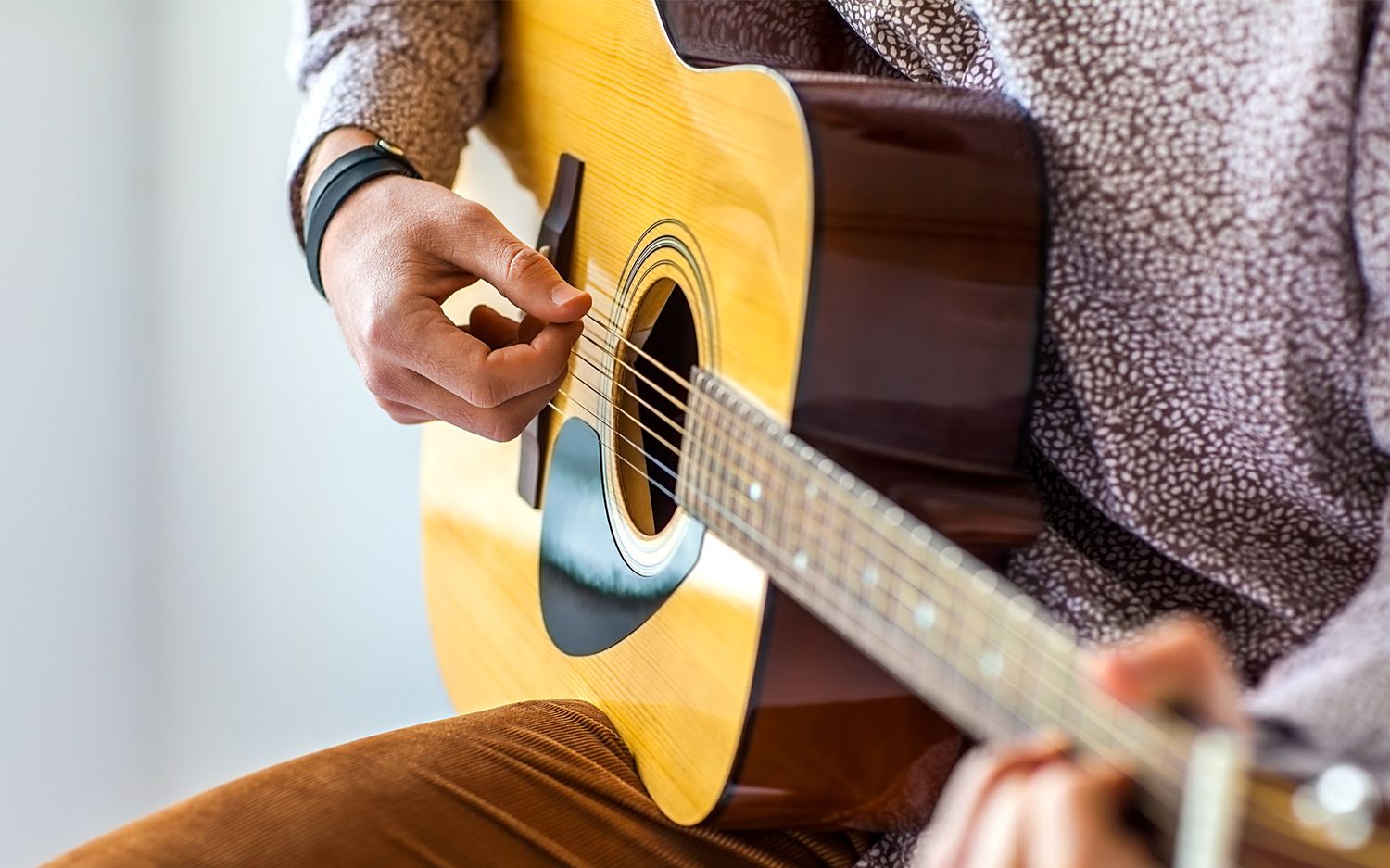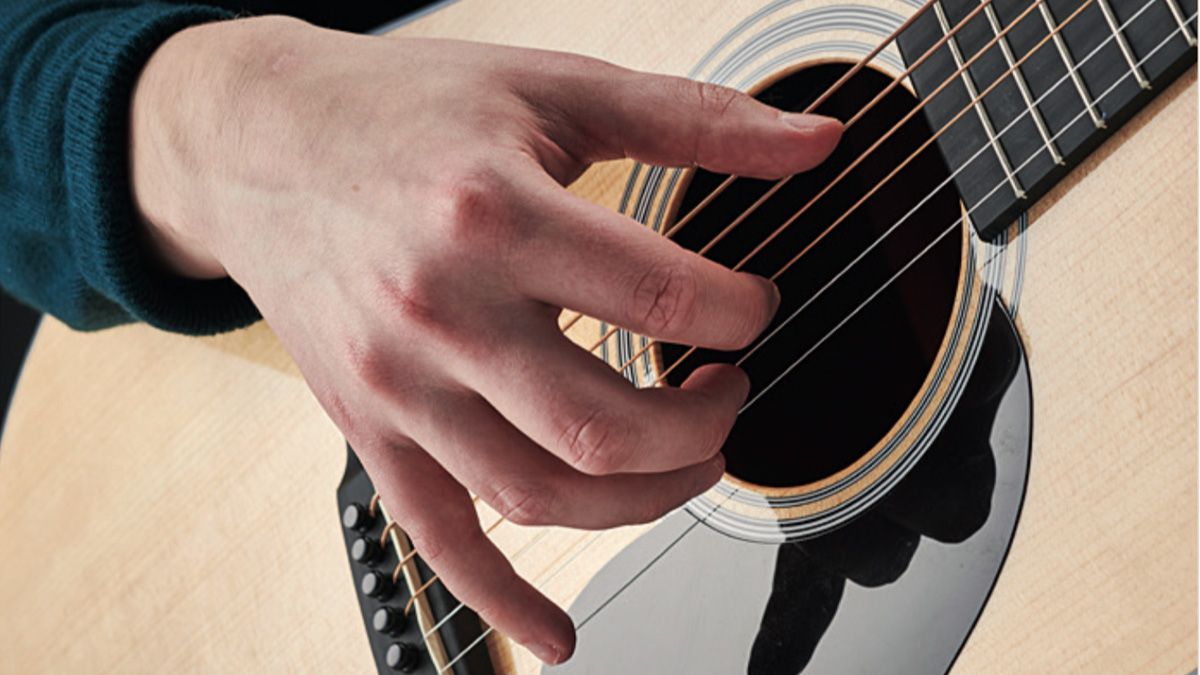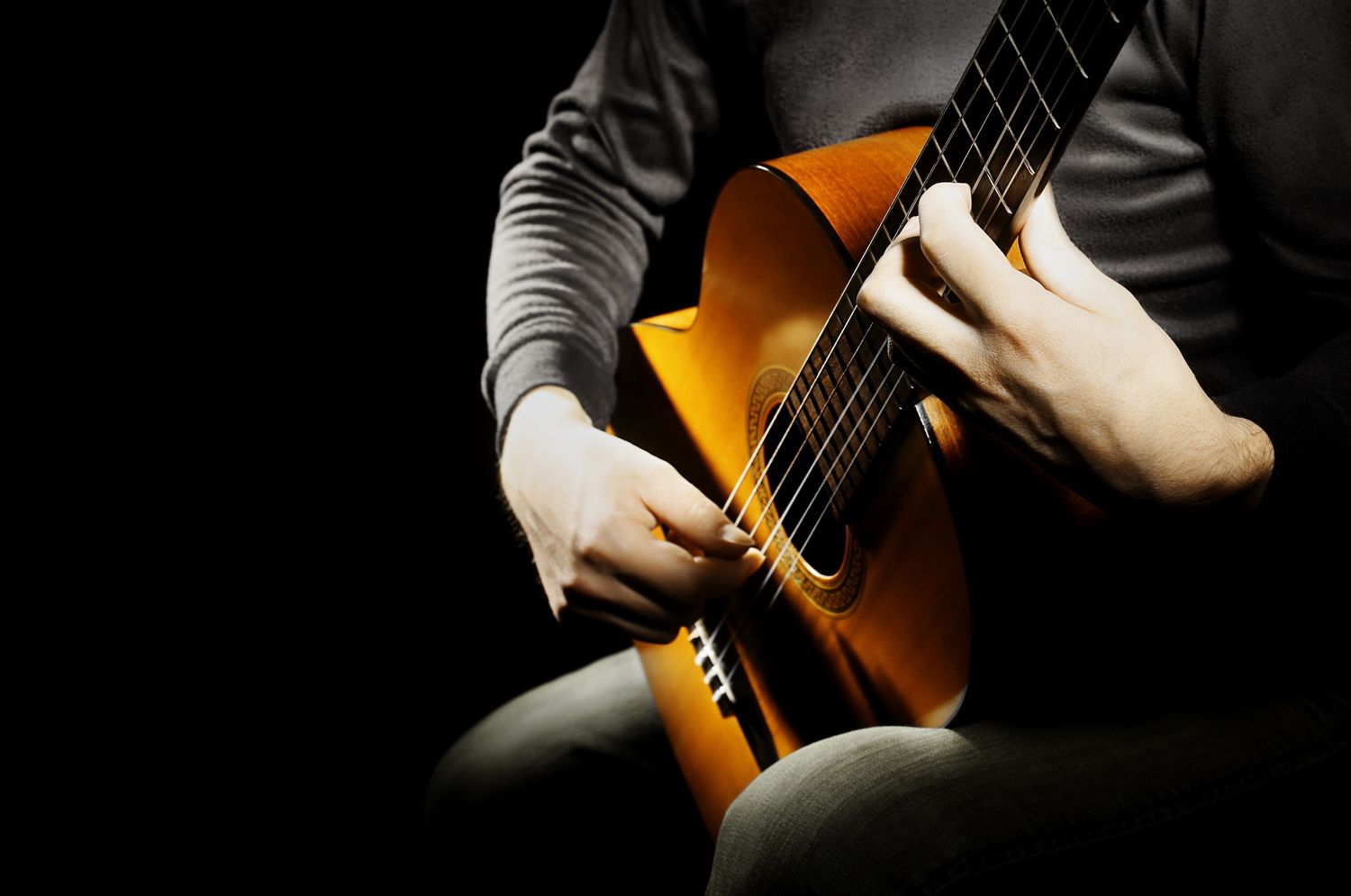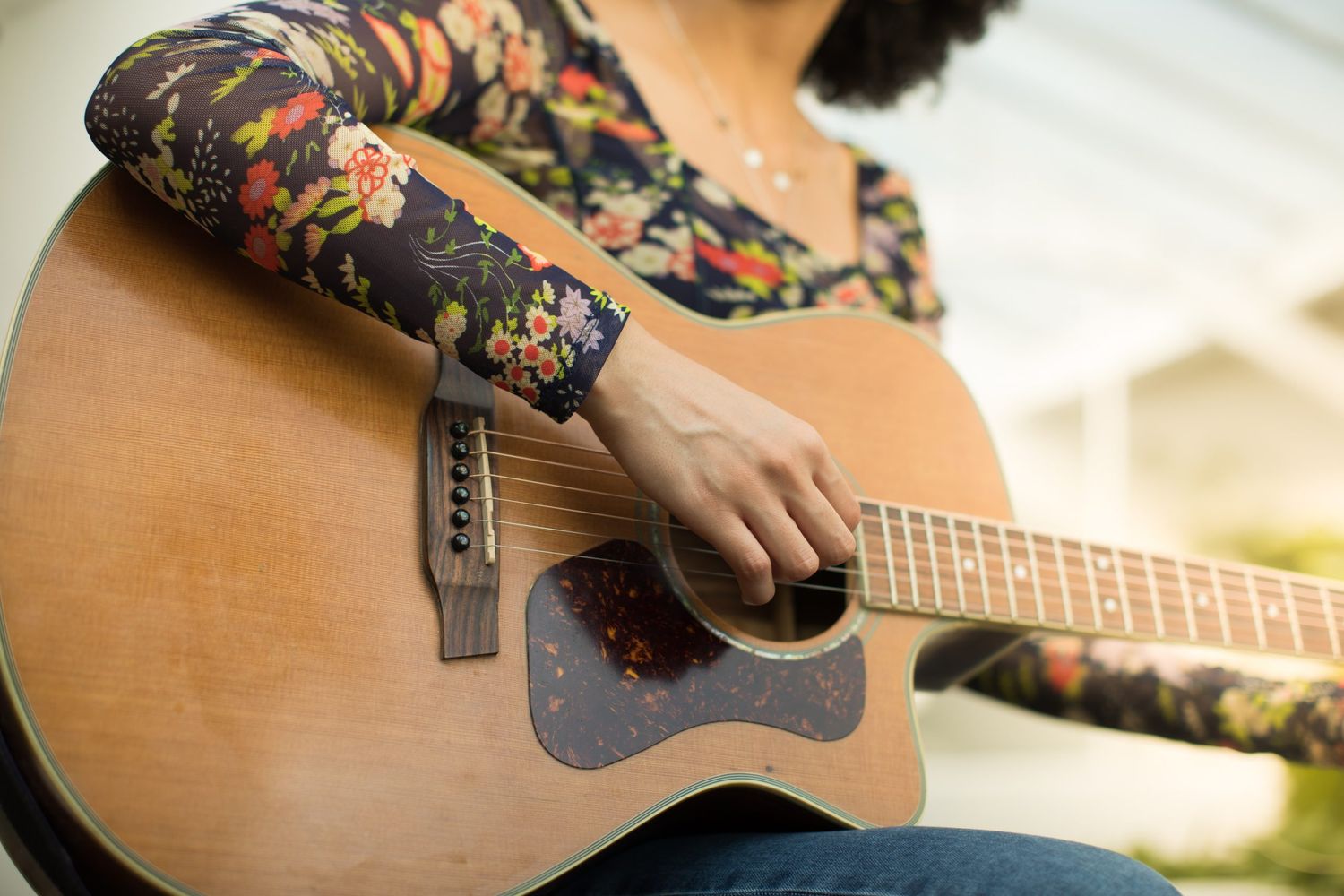Home>Instruments>Guitar>How To Play The Guitar – A Guide


Guitar
How To Play The Guitar – A Guide
Published: February 14, 2024
Learn how to play the guitar with our comprehensive guide. Master essential techniques and start strumming your favorite tunes today.
(Many of the links in this article redirect to a specific reviewed product. Your purchase of these products through affiliate links helps to generate commission for AudioLover.com, at no extra cost. Learn more)
Table of Contents
Introduction
Learning to play the guitar is an incredibly rewarding experience that can bring joy to both the player and those around them. Whether you aspire to become a professional musician or simply want to strum your favorite songs by the campfire, mastering this versatile instrument can open up a world of musical possibilities. The guitar is a cornerstone of countless genres, from rock and blues to folk and country, making it a popular choice for aspiring musicians of all ages.
In this comprehensive guide, we will explore the essential steps to help you embark on your guitar-playing journey. From selecting the right instrument to mastering fundamental techniques and understanding music theory, this guide is designed to provide you with a solid foundation for your musical pursuits. Whether you're a complete novice or have dabbled in guitar playing before, this guide will equip you with the knowledge and skills to progress confidently.
Throughout this journey, it's important to remember that learning the guitar is not just about mastering technical skills; it's also about embracing creativity, self-expression, and the sheer joy of making music. So, grab your guitar, tune up, and let's dive into the wonderful world of guitar playing. Whether you're drawn to the soulful sounds of acoustic strumming or the electrifying energy of rock riffs, this guide will set you on the path to becoming a proficient guitarist.
Choosing the Right Guitar
When embarking on your guitar-playing journey, selecting the right instrument is paramount. The type of guitar you choose will significantly impact your playing experience and overall progress. Here are some essential factors to consider when choosing the perfect guitar:
- Acoustic vs. Electric: The first decision to make is whether you want an acoustic or electric guitar. Acoustic guitars produce sound acoustically, making them suitable for intimate solo performances or casual jam sessions. On the other hand, electric guitars require an amplifier to produce sound, making them ideal for various genres, especially rock and blues.
- Body Type: Acoustic guitars come in various body shapes, such as dreadnought, concert, and parlor, each offering distinct tonal characteristics and playability. Electric guitars also have different body styles, including solid body, semi-hollow, and hollow body, each influencing the instrument’s sound and feel.
- Neck Profile and Scale Length: The neck profile and scale length of a guitar can significantly impact comfort and playability. Consider trying out guitars with different neck profiles and scale lengths to find one that feels comfortable and suits your playing style.
- Tonewoods: The tonewoods used in a guitar’s construction, such as spruce, mahogany, rosewood, and maple, contribute to its tone and resonance. Understanding the sonic characteristics of different tonewoods can help you choose a guitar that produces the sound you desire.
- Budget and Quality: While it’s essential to consider your budget, investing in a quality instrument can make a substantial difference in your playing experience. Look for a guitar that offers excellent craftsmanship, reliable hardware, and a sound that inspires you.
Before making a purchase, it’s advisable to visit a music store and try out different guitars to get a feel for their sound, playability, and overall comfort. Additionally, seeking guidance from experienced guitarists or knowledgeable sales staff can provide valuable insights into finding the perfect guitar for your needs and aspirations.
Ultimately, choosing the right guitar is a personal decision that should align with your musical preferences, playing style, and long-term goals. Whether you opt for the warm resonance of an acoustic guitar or the electrifying versatility of an electric guitar, selecting an instrument that resonates with you is the first step toward an enriching guitar-playing experience.
Understanding the Basics
Before diving into playing the guitar, it’s essential to familiarize yourself with the instrument’s fundamental components and terminology. Understanding the basics will not only demystify the instrument but also lay a solid foundation for your musical journey. Here are the key elements to grasp:
- Anatomy of the Guitar: Familiarize yourself with the various parts of the guitar, including the body, neck, fretboard, headstock, tuning pegs, bridge, and soundhole (in the case of acoustic guitars). Understanding the function of each component will help you communicate effectively about the instrument and perform basic maintenance tasks.
- Guitar Strings and Tuning: A standard guitar has six strings, each tuned to a specific pitch. The strings are typically tuned to E, A, D, G, B, and E, starting from the lowest-pitched string to the highest. Learning how to tune your guitar using a tuner or by ear is a crucial skill that will ensure your instrument sounds its best.
- Holding the Guitar: Whether you’re sitting or standing, finding a comfortable and ergonomic way to hold the guitar is essential. Proper posture and positioning will not only prevent physical discomfort but also facilitate efficient playing and fretting techniques.
- Basic Playing Techniques: Get acquainted with foundational playing techniques, including fretting notes, picking or strumming the strings, and using the guitar pick. Understanding how to produce clear notes and execute basic strumming patterns will set the stage for learning more advanced skills.
- Musical Notation and Tablature: Familiarize yourself with guitar tablature (tab) and standard music notation. Tablature provides a visual representation of where to place your fingers on the fretboard, while standard notation communicates rhythm, note duration, and other musical nuances.
By grasping these fundamental aspects of the guitar, you’ll build a strong framework for your musical journey and develop a deeper appreciation for the instrument’s nuances. As you acquaint yourself with the basics, remember that patience and consistent practice are key to mastering the guitar and unlocking your musical potential.
Tuning Your Guitar
Tuning your guitar is a fundamental skill that directly impacts the sound and playability of the instrument. A well-tuned guitar ensures that the strings resonate harmoniously and enables you to play in tune with other musicians. Here’s a comprehensive guide to tuning your guitar:
- Standard Tuning: The standard tuning for a six-string guitar, from the lowest-pitched string to the highest, is EADGBE. Utilize a chromatic tuner or a tuning app to ensure that each string is tuned to the correct pitch. Alternatively, you can tune the guitar by ear using a reference pitch from a tuned instrument or a tuning fork.
- Electronic Tuners: Electronic tuners are invaluable tools for accurately tuning your guitar. Clip-on tuners, pedal tuners, and smartphone apps with built-in tuners are widely available and offer visual and auditory cues to help you achieve precise tuning.
- Tuning Methods: In addition to using electronic tuners, familiarize yourself with alternative tuning methods, such as harmonics tuning, relative tuning, and tuning by intervals. These methods can come in handy, especially in situations where a tuner is not readily available.
- Maintaining Tuning Stability: Factors such as temperature changes, string age, and playing intensity can affect your guitar’s tuning stability. Regularly stretching new strings, lubricating the nut and bridge, and keeping the guitar in a stable environment can help maintain consistent tuning.
- Alternate Tunings: Explore alternate tunings, such as drop D, open G, and DADGAD, to expand your sonic palette and discover new creative possibilities. Alternate tunings can evoke distinct moods and textures, inspiring fresh musical ideas.
By mastering the art of tuning your guitar, you’ll ensure that your instrument consistently produces the resonant tones you desire. Whether you’re strumming chords, picking intricate melodies, or experimenting with expressive techniques, a well-tuned guitar forms the cornerstone of a fulfilling musical experience.
Learning Chords
Chords are the building blocks of harmony on the guitar, allowing you to accompany songs, create rich musical textures, and express a wide range of emotions through your playing. Mastering essential chords is a pivotal step in your guitar-playing journey, and it opens the door to a myriad of musical possibilities. Here’s a comprehensive overview of learning chords:
- Open Chords: Open chords, such as C, G, D, E, and A, are among the first chords that aspiring guitarists learn. These chords are played in the open position and form the basis for countless songs across various genres. Mastering open chords enhances your ability to strum along with your favorite tunes and provides a solid foundation for more advanced chord shapes.
- Barre Chords: Barre chords involve using a single finger to fret multiple strings, allowing you to play a wide range of chord shapes up and down the fretboard. While barre chords can be challenging for beginners, they unlock the ability to play chords in different keys and positions, expanding your musical repertoire.
- Chord Progressions: Understanding common chord progressions, such as the I-IV-V progression or the ubiquitous I-V-vi-IV sequence, empowers you to navigate through numerous songs with ease. Recognizing and internalizing chord progressions lays the groundwork for improvisation, songwriting, and musical collaboration.
- Chord Embellishments: Experimenting with chord embellishments, such as sus2, sus4, add9, and variations of standard chords, adds depth and color to your playing. These embellishments infuse your chord progressions with nuanced harmonic textures, allowing you to convey emotion and artistry in your music.
- Chord Transition Drills: Practicing smooth and efficient chord transitions is essential for fluid and confident playing. Engage in targeted drills and exercises to enhance your dexterity and muscle memory, enabling you to seamlessly navigate between chords in various musical contexts.
As you delve into the world of chords, remember that patience, consistent practice, and attentive ear training are vital for honing your chord-playing skills. Whether you’re strumming gentle ballads, unleashing energetic rock anthems, or exploring intricate jazz progressions, mastering chords will enrich your guitar-playing experience and amplify your musical expression.
Playing Scales
Understanding and mastering scales is a cornerstone of developing proficiency and musical fluency on the guitar. Scales provide the raw material for crafting melodies, improvising solos, and expanding your fretboard knowledge. Whether you’re drawn to the soulful sounds of the blues, the technical prowess of rock, or the melodic complexity of jazz, delving into scales is essential for every guitarist. Here’s an in-depth look at playing scales:
- Major and Minor Scales: Familiarize yourself with major and minor scales, which form the basis of Western music. Major scales exude a bright and uplifting quality, while minor scales evoke a sense of depth and emotion. Learning these foundational scales in various positions and octaves equips you with a versatile musical vocabulary.
- Pentatonic Scales: Pentatonic scales, revered for their timeless appeal and versatility, are prevalent in rock, blues, country, and beyond. Mastering pentatonic scales empowers you to navigate the fretboard with confidence and infuse your playing with expressive melodic motifs.
- Modal Scales: Explore modal scales, such as the Dorian, Mixolydian, and Lydian modes, to expand your harmonic palette and imbue your playing with distinct tonal flavors. Modal scales offer unique sonic characteristics and serve as a springboard for creating evocative musical landscapes.
- Scale Sequences and Patterns: Engage in scale sequences and pattern-based exercises to enhance your technical agility and melodic inventiveness. Practicing scale sequences, such as ascending and descending runs, arpeggios, and intervallic patterns, fosters fluidity and creativity in your playing.
- Ear Training and Phrasing: Cultivate your ear by internalizing the sound and feel of different scales. Focus on developing expressive phrasing and dynamics within your scale playing, allowing you to convey emotion and nuance through your musical phrases.
As you embark on your journey of playing scales, remember that consistent practice, attentive listening, and a spirit of exploration are key to unlocking the full potential of scales on the guitar. Whether you’re crafting captivating solos, embellishing chord progressions, or delving into the realms of improvisation, scales serve as a dynamic tool for shaping your musical identity and artistic expression.
Developing Fingerpicking Techniques
Fingerpicking is a versatile and expressive approach to playing the guitar, allowing you to create intricate melodies, rich harmonies, and rhythmic textures with your fingertips. Whether you’re captivated by the folk-inspired patterns of acoustic fingerstyle or the dynamic intricacies of classical guitar, honing your fingerpicking techniques opens a world of musical possibilities. Here’s a comprehensive guide to developing fingerpicking skills:
- Thumb-Index Fingerstyle: Embrace the classic thumb-index fingerstyle, where your thumb handles the lower strings, and your index, middle, and ring fingers pluck the higher strings. This technique forms the foundation for a wide range of fingerpicking patterns and lends itself to expressive playing.
- Alternating Bass Patterns: Master alternating bass patterns, a hallmark of fingerstyle guitar, where the thumb alternates between two or more bass notes while the fingers pluck the melody and harmony. This rhythmic approach adds depth and momentum to your fingerpicking arrangements.
- Fingerstyle Patterns and Arpeggios: Explore a diverse array of fingerstyle patterns, including arpeggios, cascading harmonies, and syncopated rhythms. Delve into pattern-based exercises to bolster your finger independence and precision, enabling you to navigate complex musical passages with finesse.
- Travis Picking: Dive into the art of Travis picking, a revered fingerpicking technique characterized by its syncopated bass lines, melodic embellishments, and driving rhythm. Travis picking, popularized by Merle Travis, has left an indelible mark on country, folk, and blues guitar playing.
- Classical Fingerpicking Techniques: If you’re drawn to the elegance and depth of classical guitar, acquaint yourself with classical fingerpicking techniques, such as rest strokes, free strokes, and the nuanced art of shaping tone and dynamics with your fingers.
As you immerse yourself in the realm of fingerpicking, remember that patience, attentive listening, and dedicated practice are essential for refining your fingerstyle prowess. Whether you’re crafting evocative ballads, interpreting timeless folk melodies, or weaving intricate tapestries of sound, developing your fingerpicking techniques will elevate your guitar playing to new heights of artistry and expression.
Mastering Strumming Patterns
Strumming patterns form the rhythmic backbone of guitar playing, infusing songs with energy, groove, and dynamic movement. Whether you’re strumming along to your favorite tunes, leading sing-alongs, or crafting original compositions, mastering diverse strumming patterns enhances your musical versatility and expressive range. Here’s an in-depth exploration of strumming patterns:
- Downstrokes and Upstrokes: Familiarize yourself with the foundational mechanics of strumming, encompassing downstrokes (strumming downward) and upstrokes (strumming upward). Refine your sense of timing and dynamics by practicing controlled and consistent strumming motions.
- Basic Strumming Patterns: Begin with basic strumming patterns, such as the essential down-down-up-up-down-up sequence. These patterns form the rhythmic framework for countless songs and provide a solid starting point for developing your strumming proficiency.
- Rhythmic Variations and Accents: Experiment with rhythmic variations, syncopated accents, and percussive techniques to inject depth and character into your strumming. By incorporating dynamic accents and nuanced rhythmic phrasing, you can elevate the emotional impact of your playing.
- Fingerstyle Strumming: Explore fingerstyle strumming, where you use your fingertips or fingernails to articulate individual strings within a chord. Fingerstyle strumming allows for greater control over dynamics and articulation, enabling you to craft intricate and expressive rhythmic textures.
- Strumming Patterns for Different Genres: Tailor your strumming patterns to suit various musical genres, such as folk, rock, reggae, and pop. Each genre embodies distinct rhythmic characteristics, and adapting your strumming approach accordingly enriches your musical versatility.
As you delve into the art of mastering strumming patterns, remember that attentive listening, rhythmic precision, and a spirit of creativity are essential for refining your strumming skills. Whether you’re driving the momentum of a lively acoustic performance, laying down infectious grooves, or adding rhythmic flair to your songwriting, mastering diverse strumming patterns empowers you to express your musical identity with finesse and charisma.
Understanding Music Theory
Music theory serves as the guiding framework that illuminates the inner workings of melodies, harmonies, rhythms, and the expressive language of music. For guitarists, delving into music theory fosters a deeper comprehension of the instrument, enriches creative exploration, and empowers you to communicate and collaborate with other musicians effectively. Here’s an insightful exploration of music theory as it relates to guitar playing:
- Notes, Intervals, and Scales: Familiarize yourself with the musical alphabet, the concept of intervals (the distance between two notes), and the construction of scales. Understanding scales, such as major, minor, and modal scales, provides a foundational understanding of melody and harmony on the guitar.
- Chords and Chord Progressions: Dive into the theory behind chord construction, chord symbols, and the logic of chord progressions. Unravel the harmonic relationships between chords and their roles within a musical context, illuminating the emotive impact of different chord progressions.
- Rhythmic Notation and Time Signatures: Grasp the fundamentals of rhythmic notation, time signatures, and rhythmic subdivisions. Developing rhythmic literacy equips you with the ability to interpret and execute diverse rhythmic patterns, enhancing your rhythmic precision and musical fluency.
- Harmonic Analysis: Engage in harmonic analysis to deconstruct songs and musical compositions, identifying chord functions, key centers, and harmonic movement. Analyzing harmonies deepens your understanding of musical structure and provides insights into the compositional choices of songwriters and composers.
- Ear Training and Musical Perception: Cultivate your ear through focused ear training exercises, enhancing your ability to recognize melodies, intervals, and chord qualities by ear. Heightened musical perception enables you to internalize musical concepts and apply them intuitively in your playing.
As you embark on your journey of understanding music theory, remember that theory is a tool for enriching your musical experience, fostering creativity, and deepening your connection to the art of guitar playing. Whether you’re composing original music, interpreting timeless classics, or collaborating with fellow musicians, a solid grasp of music theory empowers you to navigate the boundless realm of musical expression with insight and confidence.
Practicing Effectively
Effective practice lies at the heart of skill development and musical growth, shaping your journey as a guitarist and propelling you toward proficiency and artistry. By adopting mindful and strategic practice habits, you can maximize your progress, deepen your understanding of the instrument, and cultivate a rewarding and sustainable practice routine. Here’s a comprehensive exploration of effective practicing:
- Setting Clear Goals: Define specific and achievable short-term and long-term goals for your guitar playing. Whether it’s mastering a challenging chord progression, refining a complex solo, or improving your improvisational skills, clear objectives provide direction and motivation in your practice sessions.
- Structured Practice Sessions: Organize your practice sessions into focused segments, encompassing technical exercises, repertoire study, ear training, and music theory exploration. Structured practice cultivates a well-rounded skill set and ensures that you devote attention to various facets of your musical development.
- Deliberate Practice: Embrace the concept of deliberate practice, where you engage in focused and systematic exercises aimed at addressing specific areas of weakness or refinement. Deliberate practice hones your technical precision, musical expressiveness, and overall fluency on the guitar.
- Mental Practice and Visualization: Supplement your physical practice with mental rehearsal and visualization techniques. Mentally rehearsing challenging passages, visualizing successful performances, and internalizing musical concepts away from the instrument can enhance your musical cognition and performance readiness.
- Consistent Routine and Persistence: Cultivate a consistent and sustainable practice routine that aligns with your schedule and lifestyle. Regular, incremental progress through persistent and dedicated practice is more impactful than sporadic, marathon practice sessions.
As you immerse yourself in the art of effective practice, remember that patience, self-compassion, and a spirit of curiosity are essential companions on your musical journey. Whether you’re honing your technical prowess, nurturing your creative expression, or delving into the depths of musical exploration, practicing effectively is the catalyst for transforming your aspirations into tangible musical achievements.
Conclusion
Congratulations on embarking on your guitar-playing journey and delving into the multifaceted world of musical expression. As you’ve navigated through the essential aspects of guitar playing, from selecting the right instrument to mastering strumming patterns and delving into music theory, you’ve laid a solid foundation for your growth as a guitarist. Whether you’re drawn to the emotive resonance of acoustic fingerpicking, the electrifying energy of rock riffs, or the melodic complexities of jazz, the guitar offers a boundless canvas for creative exploration and personal expression.
Remember that the essence of guitar playing extends beyond technical proficiency; it encompasses a profound connection to the music you create and the stories you convey through your playing. Embrace the joy of making music, cherish the moments of discovery and growth, and celebrate the unique voice you bring to the instrument.
As you continue your musical odyssey, approach your practice with intention, curiosity, and a spirit of adventure. Embrace challenges as opportunities for growth, seek inspiration from diverse musical sources, and remain open to the endless possibilities that unfold through your dedication and passion for the guitar.
Whether you’re strumming for your own enjoyment, collaborating with fellow musicians, or aspiring to grace the world’s stages, your journey as a guitarist is a testament to the transformative power of music. Let the guitar be your trusted companion, guiding you through melodies, harmonies, and rhythms that resonate with your soul.
May your guitar-playing journey be filled with creativity, fulfillment, and the enduring magic of music. Embrace the instrument’s boundless potential, and let your unique musical voice resound with authenticity and joy.











